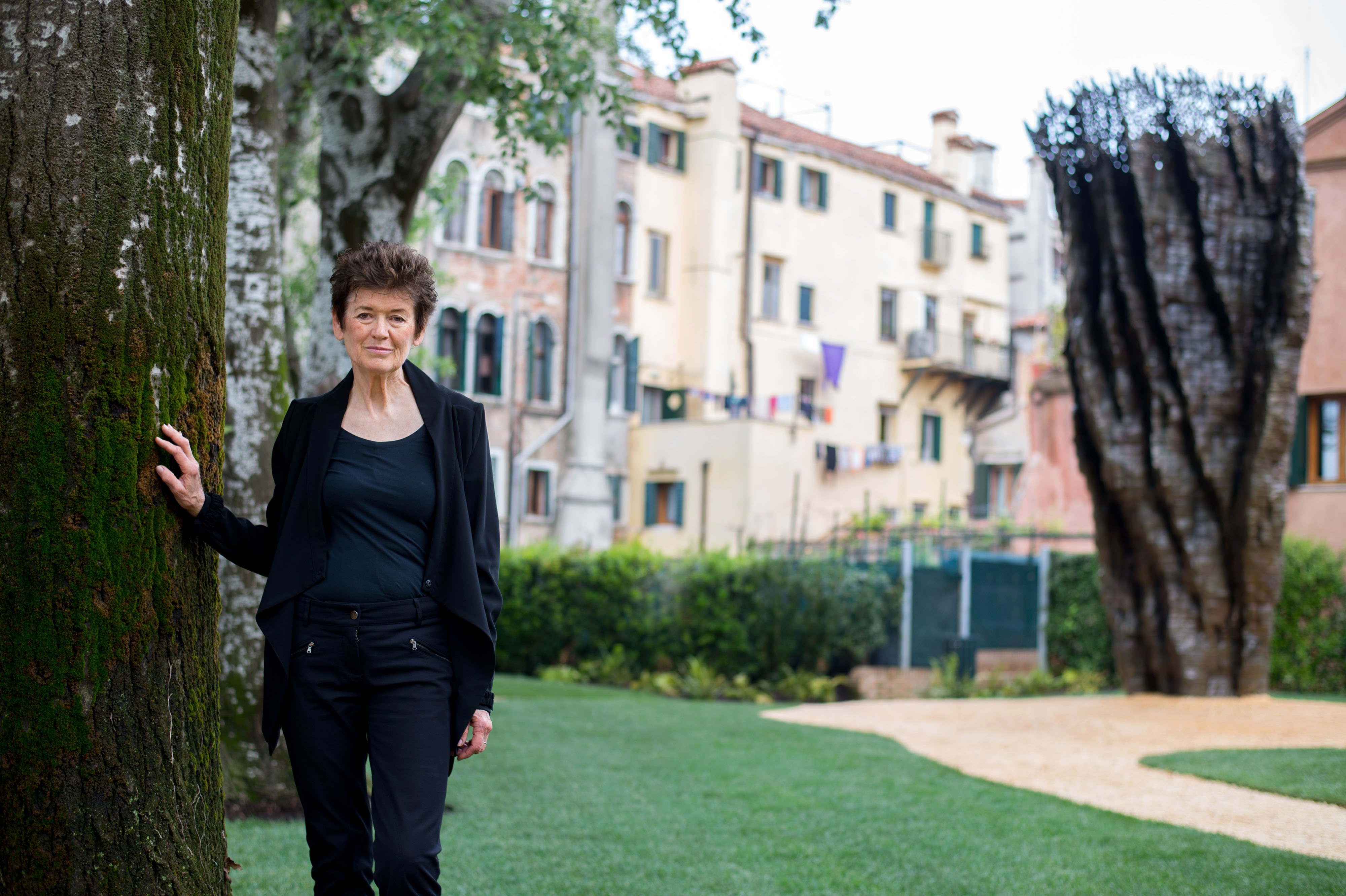
The German artist Ursula von Rydingsvard sees her intricate sculptures as evidence of her strength and perseverance. Growing up in camps for Polish refugees in post-World War II Germany, von Rydingsvard was exposed to struggle at an early age. “My parents were extraordinary survivors,” she explained in an interview with Art21 as part of its Art in the 21st Century series. “Working hard was the answer to life.”
For Ursula, that meant working with the material that had always been a part of her life: wood. The barracks she lived in with her six siblings and parents were made “entirely [of] wood… raw wooden floors, raw wooden walls, and raw wooden ceilings.” So it’s no wonder that the medium came to form the basis for her decades-long sculpture practice. “Somewhere in my blood,” she said, “I’m dipping into that source.”
Her inventive, sweeping, complex wood constructions are on view now at the National Museum of Women in the Arts in Washington, DC, in the exhibition “Ursula von Rydingsvard: The Contour of Feeling,” the most ambitious presentation of her work in the United States to date.
Works by Ursula von Rydingsvard at the Venice Biennale in 2015. (Photo by Venturelli/Getty Images for Yorkshire Sculpture Park)
In the video, which originally aired in 2007 for an episode called “Ecology,” von Rydingsvard described the great effort it takes to complete her gargantuan sculptures, made entirely of cedar and formed from stacks of puzzle piece-shaped blocks of wood that echo the organic forms of nature, like swelling tree trunks.
“The confrontation in part lies with my struggle with the cedar,” she said, explaining the various different wood-cutters that she employs to help create her pieces. (It’s a struggle in more ways than one: over the years, the artist has developed an allergy to cedar, so she now puts on a protective suit like a beekeeper before getting to work.) “It’s always telling me what it needs to do and I think that I’m trying to tell it what I want it to do,” she said.
This push-pull effect is evident in the weighty works, which often appear as if ravaged by some ferocious storm. “Within a piece that has tremendous amount of agitation and agony,” she said, “there can also be something very hushed and very quiet and very lyrical and very humane.”
Watch the full segment, which originally appeared as part of the “Art in the Twenty-First Century” television series on PBS, below. “Ursula von Rydingsvard: The Contour of Feeling” is on view at the National Museum of Women in the Arts through July 28.
This is an installment of “Art on Video,” a collaboration between artnet News and Art21 that brings you clips of newsmaking artists. A new season of the nonprofit Art21’s flagship Art in the Twenty-First Century television is available now on PBS. Watch full episodes and learn about the organization’s education programs at Art21.org.